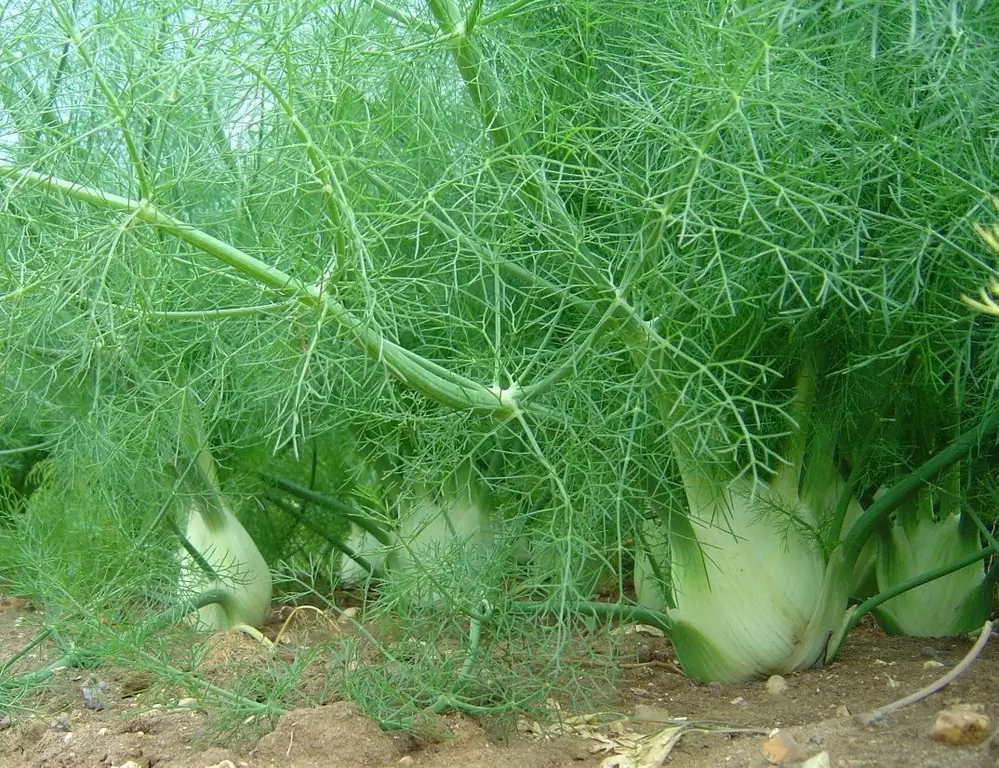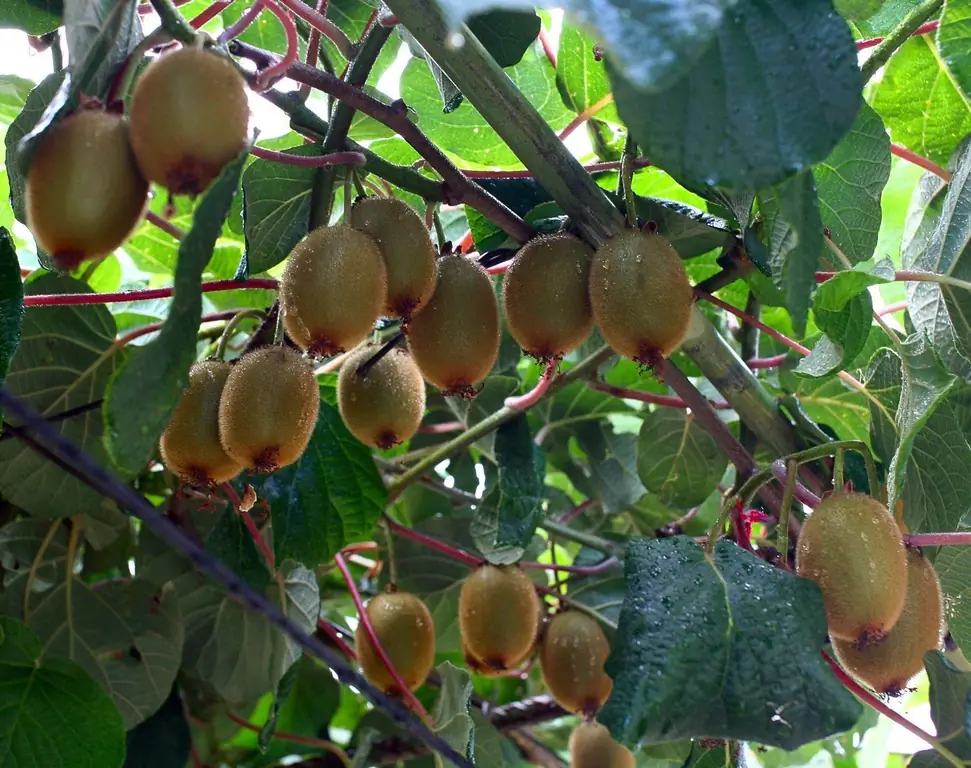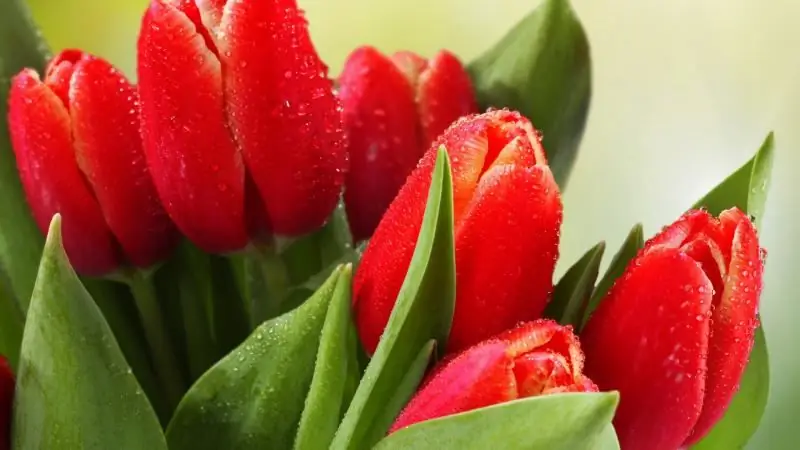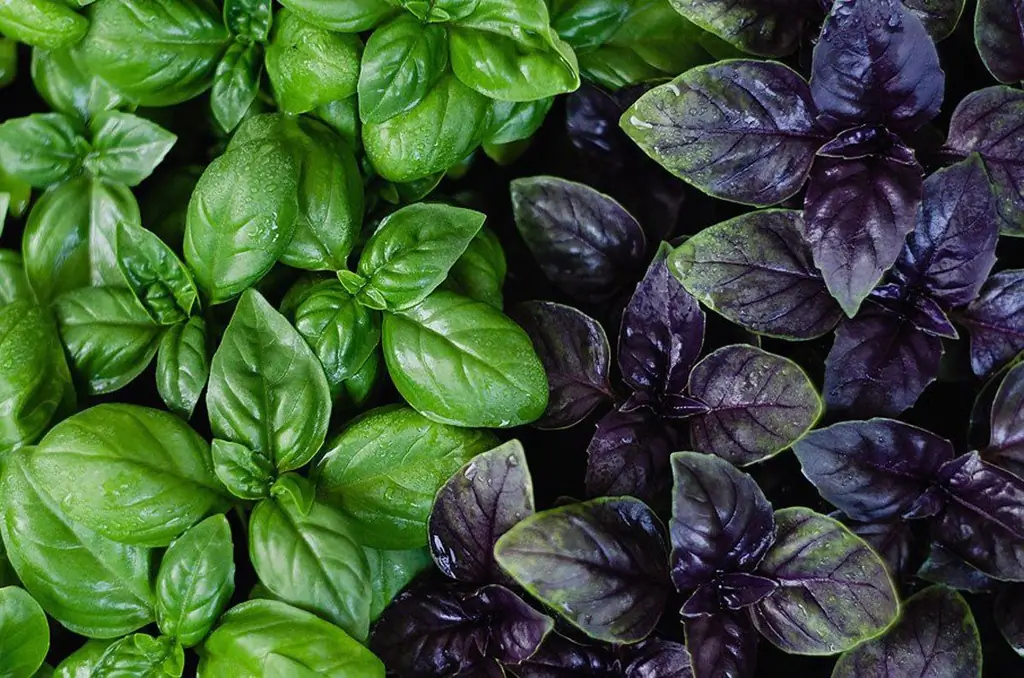
Table of contents:
- Author Bailey Albertson [email protected].
- Public 2023-12-17 12:53.
- Last modified 2025-06-01 07:32.
Several ways of sowing basil, including seedlings and directly into the ground

Basil is a spice loved by many, but not everyone can grow it. There are several reasons. The plant is afraid of frost, and when sown in late spring - early summer, the greens are ready for harvest only in autumn. You need to choose early varieties or allocate a place for seedlings on your windows. In addition, basil seeds do not germinate well without special preparation. But even this culture can submit to you if you master at least one of the several technologies of its sowing.
Content
- 1 How to start planting basil
- 2 When to sow
-
3 Basil soil
3.1 Video: green manure for looseness and fertility of beds
- 4 Seed preparation
-
5 Several ways to plant basil
-
5.1 Sowing in open ground
5.1.1 Video: agronomist tips on how to sow, grow and use basil (after 9 minutes)
-
5.2 Sowing seedlings in the classical way
5.2.1 Video: Simple Basil Sowing
-
5.3 On gauze
1 Video: Sowing Basil on Gauze
-
5.4 In a snail
5.4.1 Video: Sowing into a ready-made snail
-
5.5 Rolling without soil
5.5.1 Video: Roll-up of toilet paper
-
How to start planting basil
Sowing start with the selection of seeds. Pay attention not only to the aroma of the variety, but also to the timing of its ripening. In basil, they are equal to the period from germination to flowering. Moreover, the words on the bags "early", "mid-early", "early ripening" should not bother you, because they write this about varieties that ripen in 30 or 70 days. Truly early varieties (30-45 days) can be sown immediately in soil with preliminary treatment, mid-season and late (90 days) are best grown through seedlings.
Alternatively: sow one part of the seeds for seedlings, the second in the greenhouse, and the third in the open ground, when the heat is established. So in one season, you will gain experience in growing basil in several ways.

Basil seeds are small, there are a lot of them in the package, enough for sowing in different ways
When to sow
Sowing dates depend on where you plan to grow the basil.
- Sow in open ground when the ground warms up to + 15⁰C and the threat of frost has passed. Plant seedlings at the same time.
- In a summer greenhouse or greenhouse - 2 weeks earlier than in open ground.
- For seedlings - 14-30 days for early and 45-60 days for mid- and late-ripening varieties before planting in a permanent place (in a greenhouse or open ground).
Count down from the planned planting date and add 7-10 days for soaking and germination. For example, sow American lemon basil (55-60 days). In the middle lane, frosts stop at the beginning of June, which means:
- we sow in the ground at the end of May, seedlings will appear just in time for the beginning of June;
- to the greenhouse - May 15;
- for seedlings for planting in the ground - we count from the beginning of June: 45 days (age of seedlings) plus a week for seedlings, we get April 7-8;
- for seedlings for planting in a greenhouse, respectively, 2 weeks earlier than in the ground - in the second decade of March.
The calculation is given for a mid-season variety, early basilicas are sown 2 weeks later, late ones - 2 weeks earlier. In addition, this crop is grown on windowsills from March to October. During this period, the plants have enough natural light on the window or balcony. At home, under phytolamps, basil is sown and grown all year round.

Basil is not only edible, but also beautiful, therefore it is grown as a pot culture, especially undersized varieties
Basil soil
The soil for this aromatic herb needs a loose and nutritious one. On the plot or in the greenhouse, add a bucket of well-rotted compost or humus for every square meter of the bed. If the soil is clayey and heavy, add a bucket of old sawdust. As a baking powder, last year's fallen leaves, grass dust and other plant residues are suitable.
Video: green manure for looseness and fertility of the beds
For seedlings, buy ready-made universal soil in the store. Ask your dealer for a small seed mix. If by the time of planting the ground in your area has thawed, then take it and mix it with peat and humus (compost) in equal proportions 1: 1: 1. Before sowing, the soil must be spilled with boiling water or heated in the oven, microwave, oven, on the grill until the phase when it starts to steam. This is necessary to destroy pests (aphids, whiteflies, spider mites), whose eggs hibernate under lumps of earth and in plant debris.

Warming up the soil to 100⁰C, you will get rid of pests and pathogens that can harm basil shoots
Seed preparation
The seeds of heat-loving basil are protected from drying out and cold by a shell of essential oils, which dissolves only in an environment favorable for growth, which is why, as a result of sowing in the usual way, the germination of basil is low. The garden bed should at least be watered, covered with a film and then removed in time. But it is better to germinate the seeds first, or at least soak them.
- Take cotton pads or a cloth and wrap the seeds in them.
- Pour over with hot water (+ 50-60⁰C), squeeze out excess water slightly.
- Wrap everything in a cellophane bag and place in a warm place (+ 25⁰C).
If you unfold them in half an hour or an hour, you will see that the seeds are covered with a muddy slippery coating - this dissolves the oils. Now you can sow in the ground or wait another 3-4 days before germination.

After soaking the basil seeds, the shell softens and no longer interferes with their germination
Several ways to plant basil
Resourceful gardeners have mastered many technologies to get an early and rich harvest. Among them are sowing on gauze, toilet paper, in a snail and even in a roll-up without soil. But you can start with the simplest methods: classic for seedlings and direct sowing into the ground of early varieties.
Sowing in open ground
With this method, the main thing is to choose the right variety. It should ripen in 30-40 days.
Planting stages:
- Soak or germinate the seeds.
- Make grooves 20-30 cm apart.
- Spill furrows with warm water.
- Spread out the seeds and cover with earth. Embedding depth no more than 1 cm.
- Cover with foil or agrofiber.
Place the seeds in the grooves every 1-2 cm in case of poor germination. If the plants grow densely, then in the phase of the first pair of true leaves, they can be cut according to the scheme indicated on the seed package.
Video: agronomist advice on how to sow, grow and use basil (after 9 minutes)
Sowing seedlings in the classical way
Take boxes or cups 7-10 cm deep. If you plan to grow on the windowsill for more than a month with a pick, then the first container can be shallow - 3-5 cm. A pick in the seedling period slows down development for a week, which means add more to the estimated sowing time 7 days.
If you take a bigger and deeper container, one for the entire seedling period, then lay the drainage on the bottom with a layer of 2-3 cm. You can use perlite, small river pebbles, pieces of foam. Drainage holes are required in any container.

The usual way to grow basil is in a container, box or seedling cassette
- Fill crates, cassettes, pots or cups with soil, but not to the top, so that you add soil as it grows.
- Water the soil well.
- Spread soaked or germinated seeds 2-3 cm apart.
- Cover them with a thin layer of earth - 0.5-1 cm. You can sow superficially and cover them as they grow. Do not water from above, the seeds can go deep with water or, conversely, float.
- Cover crops with foil and place in a warm place.
- At a temperature of + 25-30⁰C, seedlings will appear in 5-7 days. Dry seeds germinate in 1.5-2 weeks.
Video: simple sowing of basil
On gauze
The method works when planting directly to a permanent place with subsequent thinning, or if the seedlings are grown in a container for more than a month without picking.
- Spread out a plastic bag, and on top of it - cheesecloth or a wide bandage in 2-3 layers.
- Dampen cheesecloth with water from a spray bottle.
- Spread the seeds evenly, 2-3 cm apart.
- Cover with another bag on top and store in a warm place for germination. If you need a lot of basil, make several such layers: foil - gauze with seeds - foil - again gauze with seeds, etc. The seeds that have hatched will sprout into the gauze and fix on it.
- Spread these strips of seeds in a container with soil or on a garden bed, gently spread the cloth, cover with earth on top and water.

Gauze with seeds sprouted on it is spread on the soil surface and covered with earth
The method must be treated thoughtfully. If the seedling period lasts 1.5-2 months, then the gauze may crumble, then you can easily transplant the basil into the garden bed. Before this period, in the phase of the first two true leaves, it will not be possible to open it, because the roots are braided with gauze, which is still intact. You can only thin out by pinching the extra ones above the ground, or spread the seeds less often before sowing.
Video: sowing basil on cheesecloth
In a snail
They write and show a lot about sowing in a snail, but the method frightened off with its complexity. It was suggested: spread a strip of film or a substrate for the laminate, sprinkle a layer of earth on top, then spread the seeds, stepping back from the edge 1-2 cm. Wrap everything up, fix and place so that the earth and seeds do not fall apart. It was this last stage that forced many to abandon the method. Without experience and sleight of hand, the earth and carefully laid out seeds will surely end up on the table, floor and adjacent territory.

Not everyone and not the first time manage to roll a snail without scattering earth and seeds
But it is worth making only one change to the usual scheme, and planting in a snail turns into a simple agricultural technique.
- Take a strip of film 10-12 cm wide, any length. Having made one snail, you yourself will decide on their number and tape length.
- Sprinkle soil on the foil and spread it evenly over the entire area of the foil in a layer of about 2 cm.
- Moisten the ground well.
- Roll up the film with earth into a roll (no seeds!), Secure with rubber bands for money or tape.
- Press a cardboard or saucer to one edge (it will be the bottom) and lift the snail by the second (future upper) edge so that it stands upright. Place the snail on a pallet, which can be the same saucer or plastic container.
- And only now start sowing. Spread the prepared seeds 1 cm apart from each other along the spiral of the snail.
- Sprinkle with earth on top, cover with foil and put in a warm place until shoots appear.
Video: sowing into a ready-made snail
Rolling without earth
The method is good for early varieties that will grow on the windowsill for no more than two weeks, as well as for growing before the first pick.
- Take a strip of film the same width as the toilet paper. Spread it on the table. You can fold a regular plastic bag in half.
- Lay the toilet paper on top in 3-4 layers.
- Dampen paper from a spray bottle.
- Along one (it will be the top) edge, backing off about 2 mm, spread the basil seeds every 2 mm.
- Roll the film with paper and seeds into a roll-up tube.
- Place in a glass with 0.5 mm water.
- Place in a warm, dark place, and after germination (after 3-4 days) transfer to light.
For watering, pour water into a glass. It is important that the bottom edge of the paper is in the water.

Seedlings in rolls cannot live long without soil, at the age of 1-2 weeks the seedlings must be transplanted into the ground
There is no food in such a structure, but the seedlings will have enough reserves available in the seeds. Basil grows well in rolls without soil for 1-2 weeks. Then you need to unfold the roll, add earth, like in a snail, or transplant the plants into pots and beds. The spines separate from the wet paper very well without being damaged.
Video: rolling seeding from toilet paper
Early varieties of basil can be sown outdoors, medium and late ones are grown through seedlings or in a greenhouse. There is only one caveat - the seeds do not germinate well, since they are covered with a natural shell of essential oil. Before planting, it must be dissolved by placing the seeds in a warm and humid environment.
Recommended:
Growing Fennel From Seeds (including Vegetable Seeds) At Home And In The Garden + Photo And Video

Practical tips for growing fennel from seed. Fennel species, varieties suitable for growing in the middle lane
How To Grow Kiwi (at Home From Seeds, Seeds, Etc.) + Video And Photos

Step by step instructions for growing kiwi at home. Growing from seeds and seeds, taking care of seedlings and plants during the growth period
When To Plant Tulips Outdoors In Autumn And How To Do It Right, A Step-by-step Guide With Photos And Videos

Why tulips are best planted in autumn. When and how to do it
How To Plant And Grow Cucumbers In The Open Field: Plant Seeds, Properly Care For Plants (water, Form, Tie Up)

What varieties and hybrids of cucumbers can be grown in the open field. Features of planting seeds and seedlings. Choice of place and timing. The nuances of care and formation
Basil Cultivation And Care, Including In Ukraine, The Moscow Region And In Other Regions, As Well As A Description Of Varieties With Characteristics And Reviews

What is basil? How to plant and care for basil: reproduction, watering, feeding. Diseases and pests of basil: signs and methods of control
